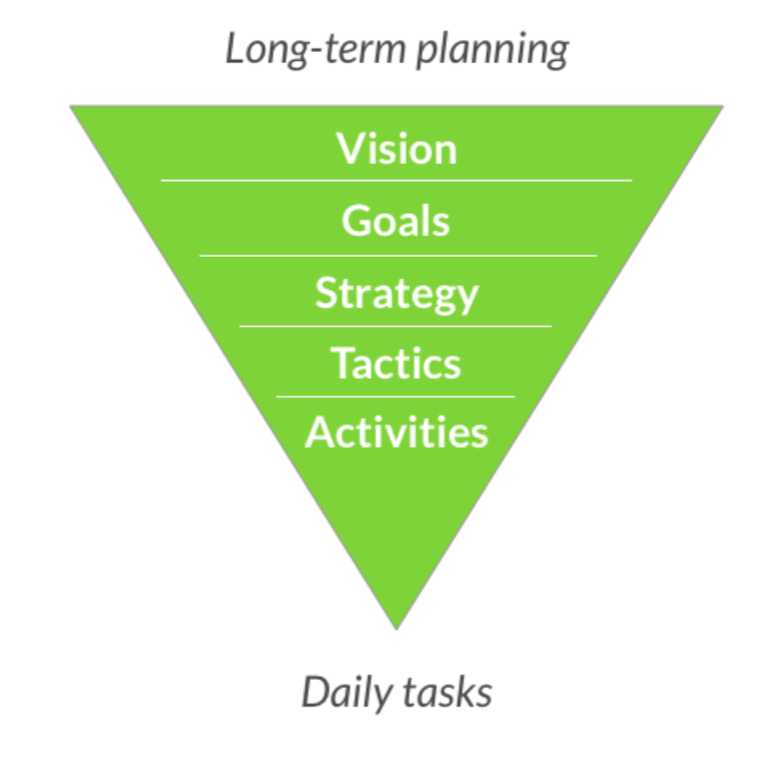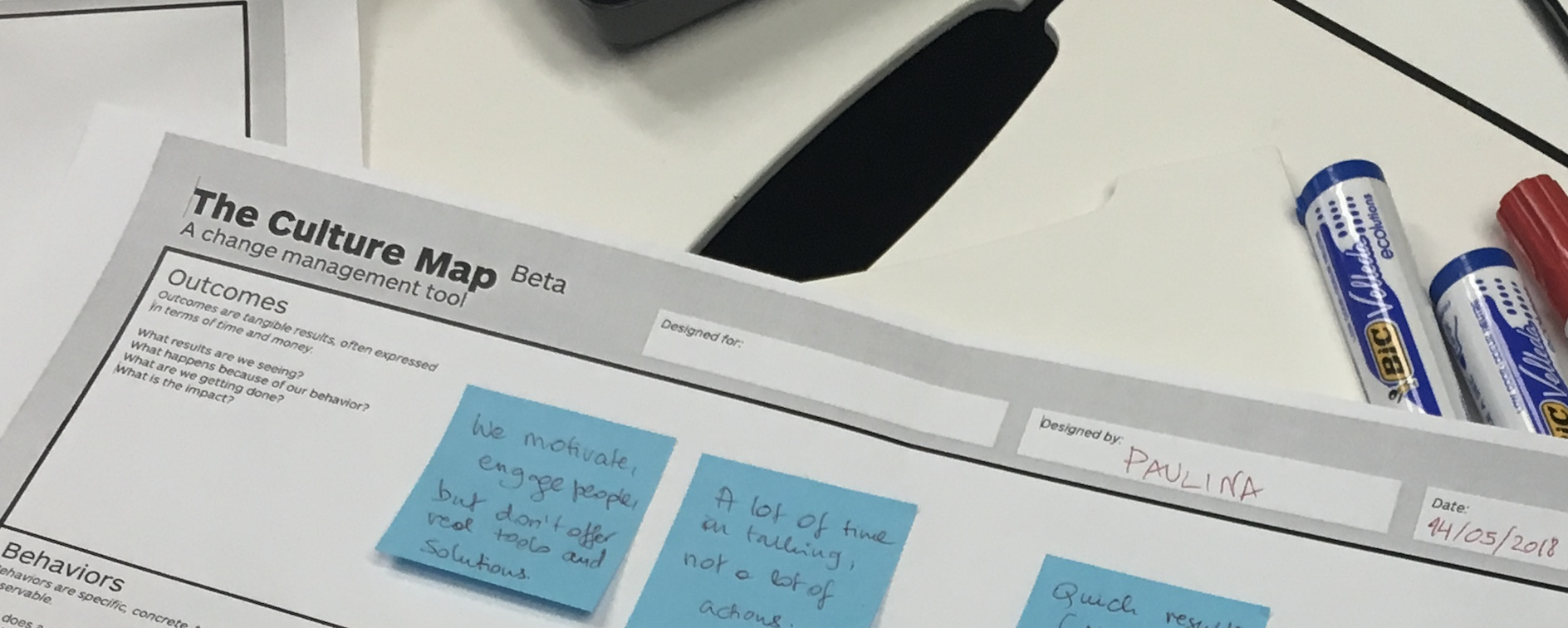To be competitive, organisations need to align their teams to a common and shared goal. Failing to do so causes employees to disagree, act according to their own direction or interest and argue about every decision taken, resulting in a chaos undermining efforts and causing constant frustration. A clear vision enables meaning and engagement. I know because I have run a chaotic company with no vision.
During a visit to the NASA space center in 1962, President John F. Kennedy noticed a janitor carrying a broom. He interrupted his tour, walked over to the man and said, “Hi, I’m Jack Kennedy. What are you doing?”
“Well, Mr. President,” the janitor responded, “I’m helping put a man on the moon.”
A vision is an inspirational goal that engages every employee in the same direction, no matter their function. A vision can be established for a product, for a company, for a team and event for yourself.
I want to cover 3 things about building a vision and aligning teams:
- How to build a vision
- What makes a great product vision
- Examples of product vision
But before, it is important to recognise that the value of a vision mostly is how it is communicated to the organisation. It’s not a magic phrase that will align everyone, it’s something that can take the form of an image, a speech, a movie, a cause, a goal, a manifesto and actions. Something that will resonate with the employees. In that sense, it is very close to the Simon Sinek “Why” of an organisation.
The product vision also directly drives decisions on the roadmap and into the company structure and processes. A vision without action is a hallucination.

Establishing and implementing a vision
Establish a shared vision engaging employees in collaborative workshops. You can use the structure of those workshops to generate a shared vision:
- 20/20 vision exercise (Innovation Game)
- Remember the future exercise (Innovation Game)
- Vision workshop (Innovation Game)
- Cover Story (Innovation Game)
- Working Backward (Amazon process)
- Start with Why workshop (Simon Sinek)
Refine the vision with clarity and focus to be able to synthesize it into one of those documents:
- growth thesis: trends, area, ideas
- innovation thesis (what’s in and what’s out)
- tell the story of the future
- A vision board (visual)
Connect the vision to actions – review your activities, project, portfolio to align with the vision:
- goals, strategy, project and actions
- decide what to kill, what to accelerate
Communicate regularly:
- on the vision and the process made toward the vision
- create communication artefacts (stories, images, films, testimonials)
- embed the vision in the structure of the organisation, change the structure and processes if needed
- connect the vision to the daily tasks, check that the vision is translated into actions
Checklist and best practices for an inspiring product vision
Describe the Motivation behind the Product – The product vision is the overarching goal you are aiming for, the reason for creating the product. It provides a continued purpose in an ever-changing world, acts as the product’s true north, provides motivation when the going gets tough, and facilitates effective collaboration.
Look beyond the Product – An effective product vision goes beyond the product and captures the change the product should instigate.
Distinguish between Vision and Product Strategy – Your product vision should not be a plan that shows how to reach your goal. Instead, you should keep the product vision and the product strategy – the path towards the goal – separate.
Employ a Shared Vision – You can come up with the most beautiful vision for your product. But it’s useless if the people involved in making the product a success don’t buy into it.
Choose an Inspiring Vision – “If you are working on something exciting that you really care about, you don’t have to be pushed. The vision pulls you,” said Steve Jobs. Your vision should therefore motivate people, connect them to the product, and inspire them.
Think Big – Make your product vision ambitious so that it engages people and it can facilitate a change in the strategy.
Keep your Vision Short and Sweet – Your vision is the ultimate reason for creating the product, it should be easy to communicate and to understand.
Use the Vision to Guide your Decisions – While the vision alone is certainly not enough, it is a first filter for new ideas and change requests
Examples of visions and mission statements
Example 1: Tesla
Tesla’s vision today is to “create the most compelling car company of the 21st century by driving the world’s transition to electric vehicles” while it’s mission is “to accelerate the advent of sustainable transport by bringing compelling mass-market electric cars to market as soon as possible.”
This vision is translated into actions but Elon Musk in 2006:
So, in short, the master plan is:
- Build sports car
- Use that money to build an affordable car
- Use that money to build an even more affordable car
- While doing above, also provide zero emission electric power generation options
ref: https://www.tesla.com/blog/secret-tesla-motors-master-plan-just-between-you-and-me
That was revised 10 years later in 2016:
- Create stunning solar roofs with seamlessly integrated battery storage
- Expand the electric vehicle product line to address all major segments
- Develop a self-driving capability that is 10X safer than manual via massive fleet learning
- Enable your car to make money for you when you aren’t using it
ref: https://www.tesla.com/blog/master-plan-part-deux
Announcing this vision publicly allowed Tesla to communicate it inside the company and outside of the company, helping recruit engineers aligned with that vision.
Example 2: Wise.com
Wise mission is the following: Money without borders – instant, convenient, transparent and eventually free. We’re powering money for people and businesses: to pay, to get paid, to spend, in any currency, wherever you are, whatever you’re doing.
ref: https://wise.com/gb/blog/the-transferwise-mission
Communicating this mission publicly allows everyone to align within the company.
Examples 3: Spotify
The vision of Spotify is : “We envision a cultural platform where professional creators can break free of their medium’s constraints and where everyone can enjoy an immersive artistic experience that enables us to empathize with each other and to feel part of a greater whole.”
As a mission: Our mission is to unlock the potential of human creativity—by giving a million creative artists the opportunity to live off their art and billions of fans the opportunity to enjoy and be inspired by it.
ref: https://newsroom.spotify.com/company-info/
Example 4: Google
Google – Mission statement: To organize the world’s information and make it universally accessible and useful.
Google’s corporate vision is “to provide access to the world’s information in one click.”
On a product level: Google Calendar team came up with a simple 4 point vision:
- Fast, visually appealing, and joyous to use
- Drop-dead simple to get information into the calendar
- More than boxes on a screen (reminders, invitations, etc.)
- Easy to share so you can see your whole life in one place
References used for this article:
https://www.christianstrunk.com/blog/product-vision
https://www.ted.com/talks/simon_sinek_how_great_leaders_inspire_action?language=en
https://www.romanpichler.com/blog/tips-for-writing-compelling-product-vision/
https://fourweekmba.com/tesla-vision-statement-mission-statement/
https://ilnem.medium.com/how-to-build-product-vision-in-5-minutes-5fee01547f5c


